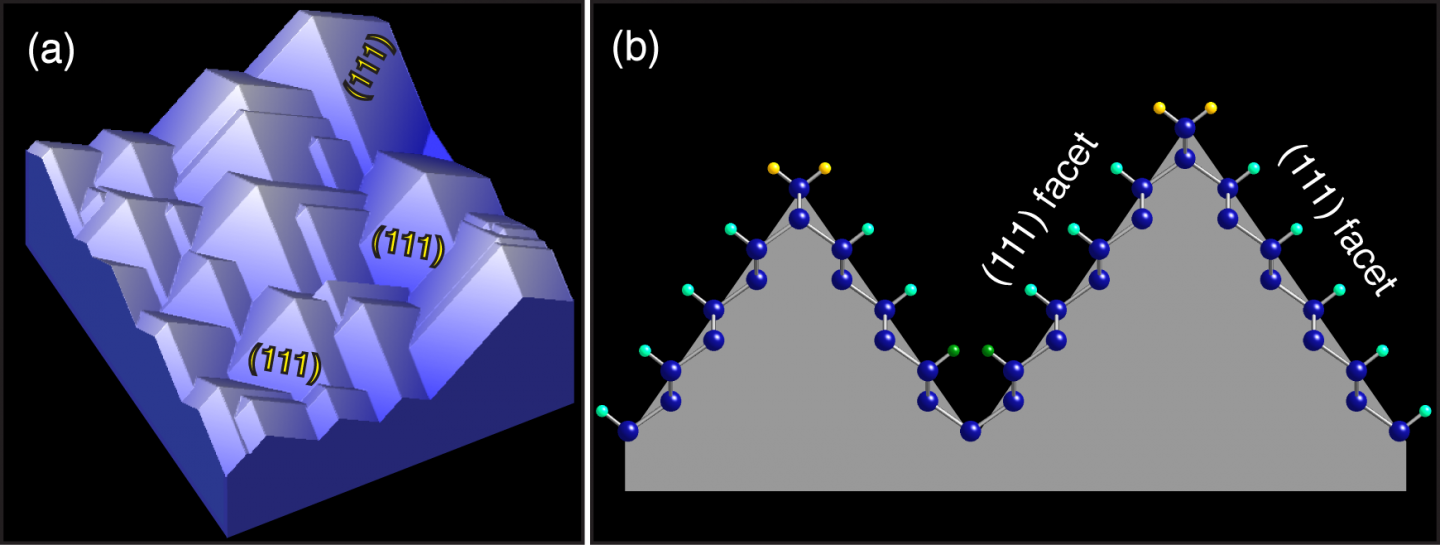

When flat Si(100) wafers are etched in certain chemical solutions, the surface spontaneously facets, developing nanoscale pyramids terminated with (111) faces and (110) edges as illustrated in the figure. This faceting is driven by highly site-specific chemical reactions that preferentially remove atoms that are not bound to (111) faces. The ability to tailor chemical reactions to produce surfaces with atomically-precise morphologies would impact many technologies, from the production of high-performance microelectronic devices to the texturing of solar cells for low reflectivity. The image in (b) shows the cross section of the surface. The navy balls represent silicon atoms, and all the other colors represent hydrogen atoms in different geometries observed on these etched silicon surfaces. Only the surface atoms are shown.
Submitted by Ankush Gupta, Brandon S. Aldinger, Marc F. Faggin, Melissa A. Hines
Department of Chemistry and Chemical Biology
Cornell University, Ithaca, NY, 14853

Forum

Support

Gallery
Igor Pro 9
Learn More
Igor XOP Toolkit
Learn More
Igor NIDAQ Tools MX
Learn More





